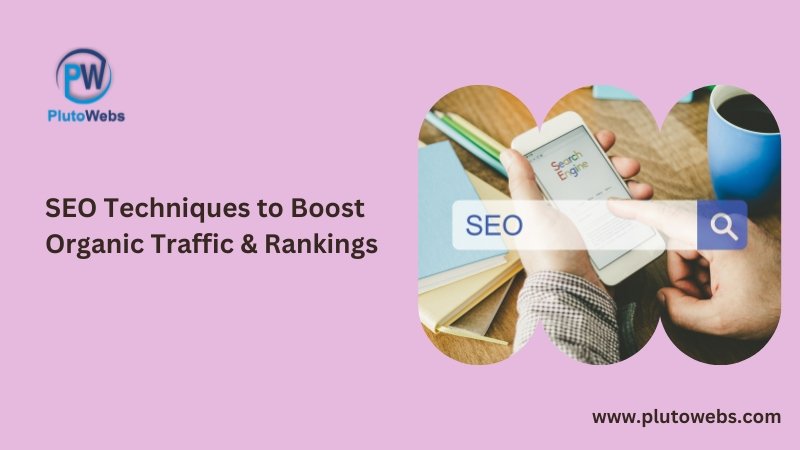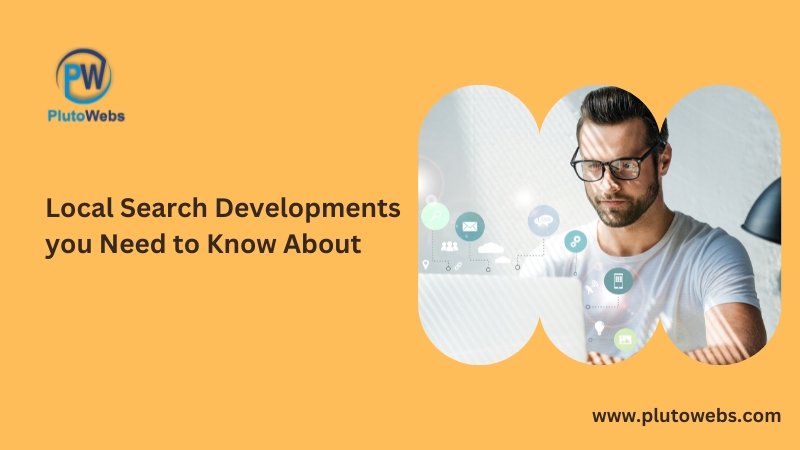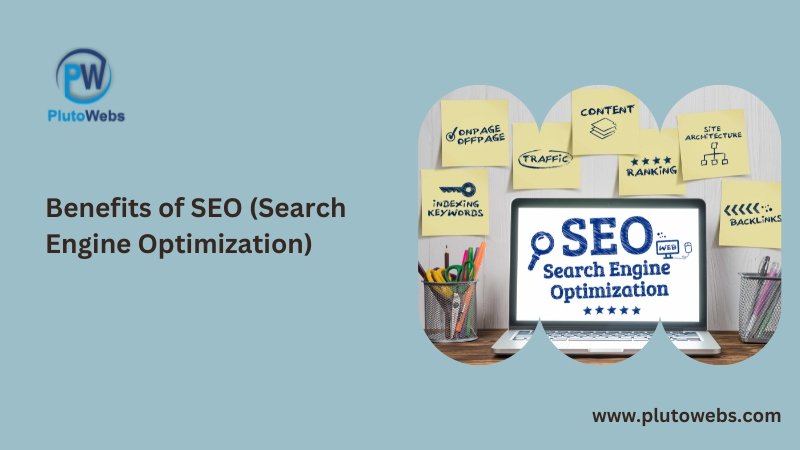SEO Techniques to Boost Organic Traffic & Rankings

How to Make Your Organic SEO Efforts More Effective For the purpose of attracting traffic to your website, having your web pages rank highly in Google’s organic search results for significant keywords can be extremely beneficial. Here are some fundamental tactics to help you raise your organic search engine rankings, even if Google is continually changing its search engine algorithm. Establish a Keyword List It is unrealistic to believe that you will appear first in Google for every keyword associated with your sector. Securing high organic ranks for your most targeted keywords should be your objective. Both marketing and management will have to put in work on this activity. Make a list of keywords based on how customers could search for your goods and services, analyse the traffic and competitiveness for each phrase using well-known tools. The sweet spot is between high volume and low to medium competition keywords because they are simpler to rank for and have a significant potential for traffic. Additionally, by using AI-enabled conversation analytics solutions, you may discover how clients genuinely discuss your items. Target Words That Complement Your Intent The next step is to match your top keywords to search intent once you’ve determined what they are. Google states that there are three different categories of search intent: Informational: This type of search shows that the user is looking for advice, explanations, or how-to articles on a certain subject. “How to change a tyre” is an illustration of a query that is informational. Transactional: This type of search implies that the user wants to buy something. The purchase of new tyres is an illustration of a transactional inquiry. Navigational: This type of search shows that the user wants to go to a particular website or locate a particular seller. “Monro tyres” is an example of a navigational query. The trick is to figure out which purpose category each keyword belongs to and then provide content that meets their demands. For instance, if someone searched “how to change a tyre,” you would write a particular post with pictures demonstrating the procedure. On the other hand, if a user searched for “buy new tyres,” you would develop a product page with all the information they would need to make a purchase, including reviews, product details, an online shopping cart, and so on. Organic Rankings Will Favor Good Content Always keep in mind that generating high-quality content that piques attention, encourages readers to share it and link back to it, and compels them to do so is essential before you get into some of the more technical approaches to increase SEO ranking. Since Google significantly favours content virality in its ranking algorithm, good content has the best chance of going viral. Invest in good authors, quote credible sources (websites with high domain authorities) to support your material, and make sure your content complies with Google’s requirements for high-quality content. The Content should Include your Target Keyword and Keyword Variations Using a keyword is the greatest strategy to gain visibility for it. Since early placement might be an indication of relevance, you should include relevant keywords early in your page titles, headlines, and body text. Throughout your material, you should frequently use your focus keywords, but never at the price of strong writing. Google’s algorithm has gotten good at detecting “keyword stuffing” and penalises websites that overuse keywords in ways that make reading difficult. By reading your material aloud, you may check if your usage of keywords seems natural or odd, which can help you avoid being punished for “keyword stuffing.” You can fix this by substituting secondary keywords for the primary keyword that you want the site to rank for. Secondary keywords are crucial because they enable you to metaphorically cast a wider net into the sea of search engines. Secondary keywords ought to share the same intent as your primary keyword and be closely related to it. For instance, if we were to produce an article about “healthy dog treats,” we might also include secondary keywords like “low-calorie dog treats,” “organic dog treats,” “best dog treats for weight management,” etc. All of these keywords support the article’s main topic and keyword while also giving it more depth. Now that we have an optimised page that is helpful to that audience, we may be found when someone searches for any of those keywords. Optimise the Titles of your Pages An element of a web page is defined by its <title> HTML tag, which also serves as a brief summary of its contents. The top frame of the majority of web browsers for that page and in tabs displays the first line of hyperlinked text that Google displays in their organic search results. This is a vital component of on-page SEO, according to Google’s algorithm. Keep your page names to 70 characters or less because anything longer will be abbreviated when included in Google’s organic results. Your title should contain your critical keywords, preferably at the start. Consider adding your firm at the conclusion if you have extra room to do so to promote brand recognition. Mobile Site Optimization Google first declared that it would start utilising mobile-friendliness as a ranking factor in 2015. This resulted in the infamous “Mobilegeddon,” which saw businesses scurry to optimise their sites for mobile devices. Since then, Google has been gradually elevating the significance of mobile-friendliness in its results; in 2020, it made the switch to a mobile-first paradigm, elevating mobile performance above desktop performance in its algorithm. The following are some suggestions for mobile website optimisation: Use Google’s mobile-friendly tool to evaluate your website. Because fingers come in diverse sizes and might easily make mistakes, designs for touch are preferred. Make sure that your CTA buttons are mobile-friendly. Adapt your pop-ups for mobile platforms. Switch on accelerated mobile pages (AMP) Utilize caching Reduce the size of your photographs to speed up loading Understanding how users interact with your website on mobile will help you make the appropriate adjustments. It’s
Why AI-Generated Content Marketing Won’t Fully Replace Humans (Yet)

Pic Courtesy: freepik The idea of having content produced by artificial intelligence (AI or neural networks, specifically) may seem like a pipe dream to any manager who has had writers completely miss deadlines or even the mark. A completed post or page is in the hands of an overworked marketer after a few keystrokes and the entry of a few key phrases. However, technology is not a panacea for all of society’s ills. Although artificial intelligence is here to stay, it doesn’t seem likely to replace all human employment. Already, AI is Creating Thousands of Articles Though many of us view AI as a technology of the future, organisations like data science and software business Automated Insights are now at the forefront of the development of AI-generated content. The Wordsmith platform from Automated Insights has been utilised by The Associated Press to create 3,000 quarterly earnings reports each quarter. The real deal? These admittedly uninteresting financial or statistical-based pieces are now put together by an automated system, which makes fewer mistakes than the reporters who previously did it. In addition to authoring, content automation has been effective in locating the most well-liked connected pieces. Automation and machine learning promise to locate these components and then use algorithms to examine interaction, platform, time posted, and other factors. In order to create a similar, effective piece of content, it can examine the most well-read articles and mimic their tone, sentence structure, and subject. Could artificial intelligence and neural networks provide a solution to the time crunch that many content marketers experience? What Should an Unskilled Content Marketer Do? You may have heard that over the course of the next 20 years, many professions will become obsolete due to robots, automation, and software. Truck drivers, financial and insurance analysts, and bank tellers might all be replaced by autonomous vehicles, software, and ATMs. Will content marketers be the next to get fired? The majority of copywriters learned the “catch them with emotions; convince them with facts” methodology for all writing intended to interest readers, not just for persuasive sales writing. When used in the right context, persuasive marketing language taps into emotions including want, excitement, grief, fear, envy, greed, and more. It also makes use of word play, a quick move that appears to be still beyond the computational grasp of neural networks. Humans won’t bother opening emails or reading blogs as more content is created by machines. Email, social media, and content marketing all rely largely on interpersonal relationships. On their digital platforms, individuals want to engage with other people, not read manufactured sentences put together by an algorithm. Throughout the day, people check their email and social media feeds to feel human. A monotonous, computer-dominated day is made more enjoyable by Facebook’s status updates and kitten videos. Businesses run the risk of automating blog posts, articles, web pages, and even email newsletter content. We’ve discovered that the material that performs the best is driven by passion, a distinctive voice, and an extraordinarily original point of view. Marketers Can’t Be Completely Replaced by AI Humans occasionally put artificial intelligence to the test to see whether it can be as clever and insightful as their fellow colleagues in content marketing. The outcomes could shock you. Even while proverbs make perfect sense to us, a system that just works with ones and zeros finds it difficult to code the personification and other clever literary devices that give them their cool factor. After all, a writer’s word choices, ability to connect with readers, and avoid grammatical errors are all influenced by a lifetime’s worth of social contacts and experiences. However, neural networks have made enough development to be able to play chess better than a champion, drive vehicles, and compose music. Is writing really that distinct from those other activities? However, there is room for AI Content to Succeed The simple conclusion is that algorithms like Wordsmith heavily rely on formulaic source material to produce the millions of articles they produce. Do you understand how a quarterly report is calculated? goal description of Program/Initiative conclusion anecdotes append Income Statements, Cash Flow, and Balance Sheets Description of Program/Initiative Objective Anecdotes Conclusion Append Income Statements, Cash Flow Statements, and Balance Sheets A spreadsheet has each of the aforementioned components. The neural network places each element in its proper location and adds a little fluff to stitch the pieces together by modeling after the human-generated template (perhaps Q1). As it progresses from quarter to quarter for each organisation, it also significantly relies on the thesaurus for some useful synonyms. The content Wordsmith creates for Yahoo and Comcast is also formula- and figure-based. Again, depending on the phrasing chosen to seem novel in each iteration, the opening sentence, transition sentences, and conclusions can be encoded into a neural network. Undoubtedly, AI-produced content has its place. By taking on the responsibility of creating the frequently feared first draught, it might even be doing a great service for content writers and even journalists. Any competent journalist or content creator may appreciate an AI presenting the information in a clear and logical manner, freeing the reporter to add flourishes, draw inferences, and connect the dots to related pieces and even societal patterns. Even those at the Associated Press who manage the AI-generated quarterly reports aren’t quite ready to do away with live, active feedback on those dreary pages. In actuality, the usage of Wordsmith has not led to the firing of any writers. Most authors are eager to provide more details, but time and financial constraints prevent them from making sweeping claims that would greatly improve the article. AI systems might be able to assist. Don’t be afraid of AI, content marketers; embrace it as a helping hand Because of the sci-fi genre and the “if it bleeds, it leads” mentality in the media, AI has been made to sound frightening. Don’t let the headlines about AI snatching content jobs concern you, either. Marketing news is just as guilty of invoking
Local Search Developments you Need to Know About

What distinguishes local SEO from standard organic search results, and what does this mean for your marketing plan? Any SEO plan aimed at clients in a particular area, city, or neighbourhood must include local search. In order to increase your rankings and visibility in local search results, such as Google’s Map Pack/Local Pack, you should concentrate on local SEO. Increasing webpage rankings in organic search are done through organic SEO. Your website’s position in those organic results can have a beneficial impact on how well it performs in the Local Pack. When Google believes that a search query has local intent, organic results are another fantastic opportunity for your local business to show up in front of eager searchers. Therefore, despite the fact that local and organic SEO are connected in these ways, each calls for a distinct strategy that uses various optimization techniques. Let’s start at the beginning and ask what local SEO is and why it matters. Local SEO: What Is It? Search engine optimization for local search results is known as local SEO. This entails assisting Google in making your company’s listing in the Local Pack/Map Pack rank higher and show up more frequently in response to a higher volume of pertinent queries. Consider the last time you went out into the world in pursuit of something. Perhaps [men’s shoes], [daycare centers], or [coworking spaces] were involved. The goal of Google is to provide users with the most relevant results for every search. And those Map Pack results will be prominently shown on the first page of the search results when its algorithms determine that your purpose is local — that you are seeking something in the vicinity of you. Additionally, organic search results for establishments and services in your neighbourhood may supplement them. Local results may show up as the default view above all organic material when you search for something like [Mexican restaurants open now]. Google has identified your demand as being urgent and local. A plain blue link is less likely to satisfy that demand than the information provided in local search results, which includes company name, address, phone number, website, images and videos, customer reviews, and star ratings, among other things. Best practices for SEO generally include following Google’s Webmaster Guidelines and focusing on the user experience on your website. If you want your website to appear in organic search results where Google has concluded that the query has a local intent, doing this is crucial. However, as MapPack results are heavily influenced by your Google Business Profile (GBP) listing, you can appear in the Map Pack even if you don’t have a website. They might incorporate data that Google has gathered from other websites as well as user ideas. The most significant of these is Google’s “Guidelines for displaying your business on Google,” which also has a distinct set of rules specifically for local SEO. These rules are crucial for increasing your visibility in the Map Pack and preventing the suspension of your listing. Please keep in mind the distinctions between local organic and the Map Pack as you read through our Local SEO Guide. On-page optimization of your webpages, technical SEO for your website, and other topics may occasionally come up. These subjects deal with your chances to show up in local organic results and use your website to enhance Map Pack rankings. You are learning about local SEO as it relates to the local results you get on Google Maps as you read about local reviews and star ratings, Google Posts, and other components of your GBP. The Importance of Local Search Here are some figures showing the continued value of local search for businesses: Google reports that about 25% of local smartphone searches result in a purchase, and about 75% of those searches lead to a visit to a business. Google estimates that geography is a factor in about 30% of the searches it processes. In a recent poll on local search, about 60% of customers stated that they conduct daily local searches. According to a recent local SEO survey, about 80% of customers who are conducting a local search read online reviews of businesses and take close to 14 minutes to do so. Google Maps is used by about 85% of people to locate businesses. 90% of the time, Yelp is among the first five search results for SMB searches. Around the world, 74% of in-store customers who conducted their search prior to entering the store claimed to have looked for information such as “closest store nearby,” “locations,” “in stock nearby,” and other kinds of hyperlocal data. For their local searches, more than half of all Internet users globally utilise a mobile device. To find out more about nearby businesses, 83% of searchers use Google Search; 55% use Google Maps, 44% use Apple Maps, 39% use Yahoo, and 31% use Bing. Google’s Local Ranking Algorithm Determination Google is far more transparent about what it takes to rank in local results but jealously guards its organic search ranking algorithms. Google lists these as the top three local ranking criteria in each category: Relevance Distance Presence “Relevance is the degree to which a local business profile corresponds to a user’s search criteria. To help Google better understand your business and match your profile to relevant searches, add complete and detailed business information, according to Google’s help guide on how to raise your local rating. Distance, according to Google, is the distance between each potential search result and the location keyword entered during the search. We’ll determine distance based on a user’s location if they don’t indicate a location in their search. Furthermore, prominence in this instance refers to the level of notoriety that the company has in Google’s eyes. As search algorithms attempt to take offline significance into account, this is likely the most complicated category of local ranking factors. Increasing Local Search Visibility As you can see, local search is a crucial channel for companies of all sizes
Benefits of SEO (Search Engine Optimization)

There are many aspects to creating an effective online marketing strategy. One of the key components to SEO for Small Business is proper online marketing. Without being properly optimized, a website faces the risk of never being found in search engine results pages (SERPS) and never seeing any sales. To remind you why SEO is still a crucial part of the online marketing formula, here are five top benefits that your small business website can obtain by utilizing a well-formed SEO strategy. INCREASED TRAFFIC FOR YOUR BUSINESS When a thorough search engine optimization strategy is put in place on your website, it creates a specific plan for every page. This results in pages that are optimized for Google’s crawlers and gives them the information that they need to feed the algorithm that determines rankings. This is done by optimizing individual title pages and producing content that is relevant to specific keywords and keyword phrases. When all of that occurs, top positions are given to your pages in the SERPS. Make sure to read my post about writing copy for search engine optimization. That results in an influx of increased traffic to your website and a higher chance of targeting not just impressions but clicks from customers who are interested in your specific products or services. If you include that with the creation of a killer website and well-planned site architecture, you have a recipe for better traction in your niche. Whether your business is in San Diego, or anywhere else a quality website is key. Keeping up with competition Just Keeping up with competition may be okay for some businesses, but you have a great advantage to increase sales and pass by rivals by incorporating a few tactics from SEO. Search engine optimization provides you with the ability to check out the competition and see which keywords they are using to drive traffic. 57% of customers say they won’t recommend a business with a poorly designed mobile site and 40 percent have turned to a competitor’s site after a bad experience. (Source: Google) This gives you the ability to take those keywords and check them against your keyword list. If you discover that you are not using any of those keywords or keyword phrases, you can create new pages that are specially made to highlight those keywords. In fact, it is good practice to take popular keywords from your SEO competition and place them on specific pages of your website. This provides your business with more valuable content that can attract potential customers With haphazard planning and no search engine optimization implementation on your site, search engines have no idea how to categorize your products or services. There is a specific way that content should be placed on your site so that it is not only highly enticing to potential customers but readable by search engine robots that scan its pages. You will achieve better conversion rates when search engine optimization tactics are used. This includes using natural language and keywords throughout your content that is not spammy. It also includes optimizing images and videos, disavowing malicious backlinks or creating new content that is optimized. ROI, Return on Investment Search engine optimization is highly measurable. The results are the same if you sell physical goods or only services — SEO works. Every aspect of your SEO efforts can be tracked and measured. One of the most important factors is monitoring traffic and watching your conversions. February 2015 polling by Econsultancy showed that 73% of in-house marketers and 76% of US agencies said SEO provided an excellent or good return on investment (ROI). (Source: eMarketer) By drilling down to a marketing strategy that engages with specific demographics, you can see how searches are being performed. If you have a website that sells physical products, you’re able to track the one keyword or keyword phrase that was used to make a sale. Service-based businesses can attribute keywords to contact forms that generate leads. These tactics will lead to a higher ROI as you consistently can refine which keywords you use to drive traffic to your website. Brand Awareness For Your Company Through Higher Rankings The credibility of your business plays a significant role in how people determine which links they will click when searching for specific products or services. It’s well known that people perceive the top listings in the SERPS as being the most credible and trustworthy. Google wants to give people a great user experience and places brands with valuable information at the top. These listings gain a significant amount of impressions and can result in an increase of brand awareness for your business. Being on the initial page of a popular keyword or phrase helps customers and potential customers associate specific keywords with your brand. It also increases the level of trust between you and your client base. When the pages from your website consistently reach and are seen at the top levels of the SERPS, it initiates a higher standard of trust that should produce more conversions and sales.
